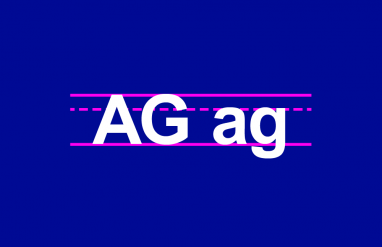One of the foundational reading skills that most children learn in early elementary or primary school is how to decode words. While decode sounds like something spies do, decoding is actually the ability to see a written word and read it aloud.
This process is often known familiarly as being able to sound out words when reading. Sound complicated? It’s not, we swear!
Plus we’re going to break down different elements of decoding words, from recognizing letter sounds to blending, as well as provide some fun learning activities you can do at home, so you can help your kid master this critically important skill.
Why is decoding important?
Many students are taught to read via a method known as phonics. This centuries-old approach to learning how to read teaches students to break down words into the sounds represented by the letters. For example, in English, the letter C can make the sound /k/ or /s/. (The forward slashes indicate a sound rather than a letter.)
Knowing how to pronounce letters or combinations of letters that symbolize specific sounds is known as decoding. To be clear, being able to decode a word isn’t the same as knowing what the word means. But it’s an important first step.
Letter sounds
The first step to being able to decode words is recognizing that different letters make different sounds. If you have a child in preschool or kindergarten, they are likely working on this skill in class.
Try some of these activities
To help your child with this, and to make it fun, you can casually incorporate recognizing letter sounds into daily life.
- Sing the Alphabet Song together (it’s a classic).
- Get letter magnets and have fun rearranging the letters to make nonsense words. Ask your child to say the sound of each of the letters in the nonsense word. (And then come up with a definition for your nonsense word!)
- When reading with your child, point to pictures, name what’s pictured, and ask what letter the word starts with. For example, “This is a frog. Frog. What letter does frog start with?”
- Play I-Spy with letters on signs around your neighborhood, like stop signs. For example, “I spy with my little eye the letter S.”
VC and CVC words
Once students have the basics of letter sounds down (even if they’re still working to master the whole alphabet), the next step is VC and CVC words. V stands for vowel and C stands for consonant. The vowels are A, E, I, O, U and sometimes Y. Consonants are all other letters. These short words are a good way for students to start to learn how vowels work. If your child has started tackling VC and CVC words, there are a few fun ways you can help them build this skill.
Try some of these activities
If your child has started tackling VC and CVC words, there are a few fun ways you can help them build this skill.
- Use letter magnets or a white board to write a CVC word like bat. First, say the word aloud sound-by-sound and have your child create the word. Then, swap out the vowel to create another word, like bit. Play around with creating different words by swapping out the vowels without changing the consonants. Alternatively, you can swap out the first letter while leaving the vowel and the last letter the same to create lists of rhyming words.
- One of the nice things about CVC words, like cat and dog, is that children are often familiar with what they mean from their everyday lives. Ask your child to draw a CVC word, like dog. Then, have them label the drawing. Break the word down sound-by-sound to help them (e.g., /d/ /aw/ /g/).
- If you come across a CVC word when reading a book aloud to your child, pause and ask them to identify each of the letters in the word. You can also read the word aloud while pointing at each of the letters. Then, have your child repeat the gesture and the word.
Combining letters (digraphs)
Often, letters are combined to create a single sound. These are technically known as digraphs (di– means “two” and –graph means “letters”). For example, P and H combine to make the sound /f/. Once students have a grasp on letter sounds and simple CVC words, they are ready to tackle combining letters.
Try some of these activities
There are a couple different ways you can help your child work on this skill at home.
- Words with the same vowel digraphs, like AI or OU, often rhyme. Singing and/or reading classic nursery rhymes like “Hickory Dickory Dock” and “I’m a Little Teapot” reinforces this concept.
- Use letter magnets to create words with the same digraphs. For example, you can start with chow and then take away the ow and have your child add new letters to create a new word, like chat. Read the words aloud.
- When reading aloud with your child, pause when you come across a word with a digraph. Read the word aloud. Then, ask your child if they know what sound the digraph makes (e.g., “What sound does AY make in this word?”) Have them repeat the word after you while pointing at the letters.
Blending
Besides recognizing letter and digraph sounds, another foundational skill of decoding is being able to blend sounds. Think about it: when you read the word dog, you don’t pause between each of the sounds (/d/ (pause) /aw/ (pause) /g/). You read it as a complete word: /dawg/. That is blending.
The best way to learn blending is to practice, practice, practice. Have your child read aloud to you (or a stuffed animal, or a pet) at home. Don’t insist that they blend every single word (that might take forever and be very frustrating). We recommend you start by encouraging them to blend the sounds of shorter words, like VC and CVC words.
Try this!
Another way to practice is to start by having your child recognize each of the letter sounds in the word as you both count off the sounds on your fingers. Then, you slowly say the word with the sounds blended as you count off the sounds again on your fingers. Finally, have your child repeat the word while also counting off the sounds on their fingers.
Be patient
When reading aloud with your child, give them lots of time to work on decoding words independently. It takes a lot of mental energy to figure out what sounds the letters on the page make. Instead of jumping in to tell them what the word is when they get stuck, wait and let them figure it out themselves.
If your kid routinely struggles to recognize letter sounds and blend them together, and is missing class benchmarks, you might want to ask their classroom teacher about their progress. It’s possible there is an underlying problem, such as dyslexia, that needs to be addressed. That said, everyone learns differently. If your child is making progress, even if it’s different than what you expect, be patient. They will likely get where they need to be eventually. Sometimes, it just takes a little while for decoding words to “click.”
While learning to decode words is important, learning to love to read is even more important. Your child will likely get plenty of practice decoding words in the classroom. However, you can still model good reading behaviors at home.
Keep lots of books around and at a height that your child can reach them independently. Read out loud as part of bedtime routines. Have your own books around the house that you can read to show that you enjoy reading. Make reading into a fun, low-pressure activity. Before you know it, they (and you!) will be a master-class decoder.














